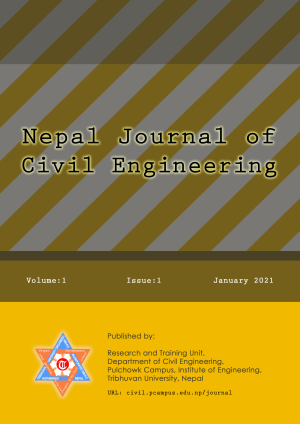Evaluation of the Land Surface Temperature using Satellite Images in Kathmandu Valley
DOI:
https://doi.org/10.3126/njce.v1i1.43368Keywords:
Heatmap, Kathmandu Valley, Landsat-8, Land Surface Temperature, Urban Heat IslandAbstract
Urbanization leads the conversion of green area to built-up area which eventually leads to increase in surface temperature and creates the urban heat islands. Kathmandu Valley (KV), one of the growing mega cities in South Asia in-terms of population density and urbanization, requires the monitoring of urban morphology for the proper assessment. Use of satellite images makes the work more easier. The present study focuses on the evaluation of Land Surface Temperature (LST) as a preliminary work of monitoring urban and periurban areas of Kathmandu Valley. We used Landsat-8 satellite images as an input to evaluate LST over different administrative units for the study period 2013-2019. The results of research showed that Kathmandu, Bhaktapur and Lalitpur administrative units have higher average LST (ranging from 22.1 to 36.9°C in the month of March and June respectively) comparing to other administrative units. The average LST was found to be higher in the month of June. The temporal results of LST portrays 2015 as the hottest year during the study period. Also, spatial and temporal evaluation of LST in KV suggests to increase the more green space in the urban areas to minimize surface temperature. Finally, the authors of current research recommends using the concept of remote sensing (satellite image analysis) as an alternative tool for monitoring urban morphology.
Downloads
Downloads
Published
How to Cite
Issue
Section
License
All the materials published in the journal are freely accessible to all. Reproduction of the part or entire content is allowed only when written consent from the publisher is obtained. The original source should be cited in reproduction as well as copying.




